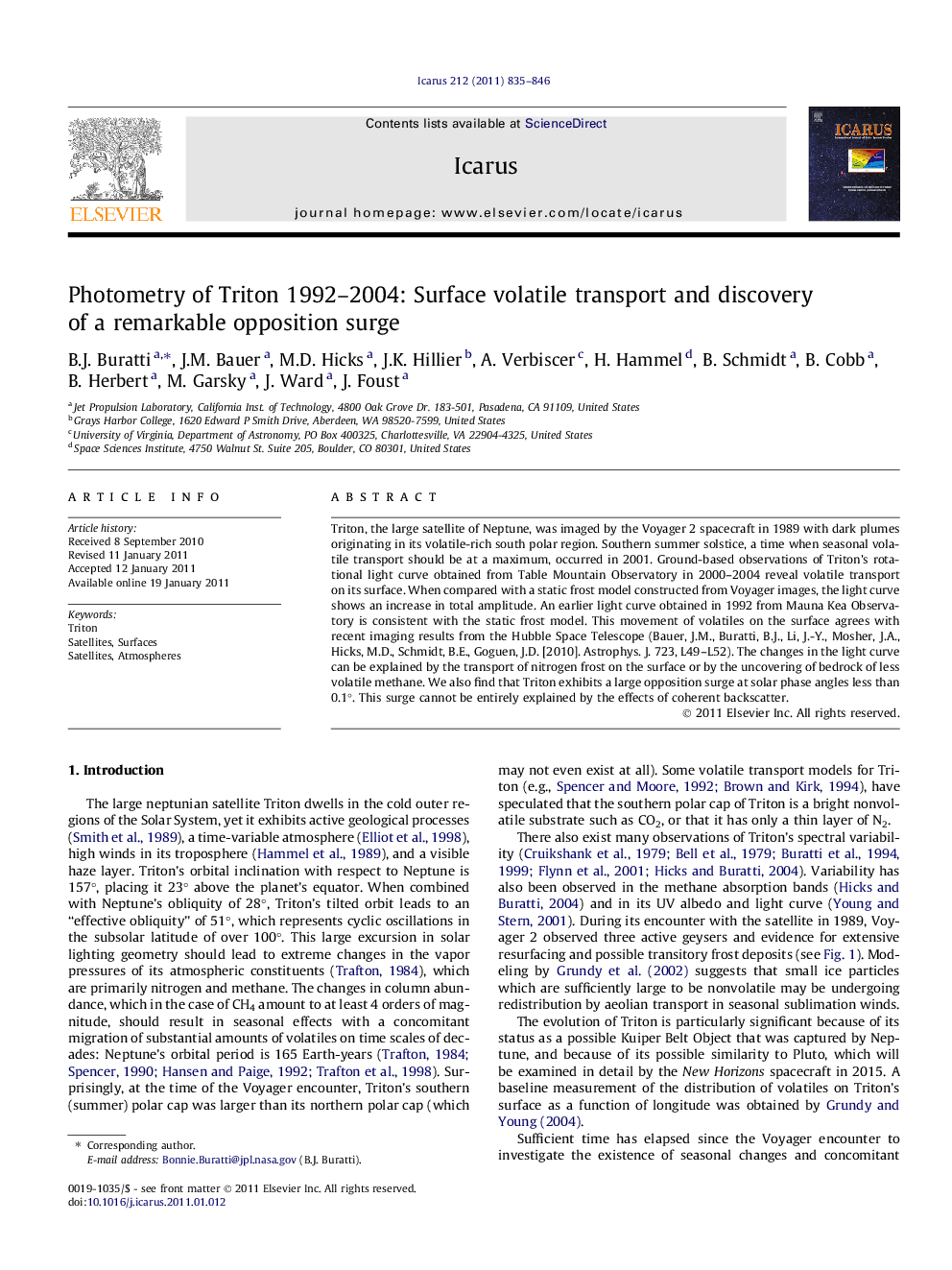| Article ID | Journal | Published Year | Pages | File Type |
|---|---|---|---|---|
| 1774605 | Icarus | 2011 | 12 Pages |
Triton, the large satellite of Neptune, was imaged by the Voyager 2 spacecraft in 1989 with dark plumes originating in its volatile-rich south polar region. Southern summer solstice, a time when seasonal volatile transport should be at a maximum, occurred in 2001. Ground-based observations of Triton’s rotational light curve obtained from Table Mountain Observatory in 2000–2004 reveal volatile transport on its surface. When compared with a static frost model constructed from Voyager images, the light curve shows an increase in total amplitude. An earlier light curve obtained in 1992 from Mauna Kea Observatory is consistent with the static frost model. This movement of volatiles on the surface agrees with recent imaging results from the Hubble Space Telescope (Bauer, J.M., Buratti, B.J., Li, J.-Y., Mosher, J.A., Hicks, M.D., Schmidt, B.E., Goguen, J.D. [2010]. Astrophys. J. 723, L49–L52). The changes in the light curve can be explained by the transport of nitrogen frost on the surface or by the uncovering of bedrock of less volatile methane. We also find that Triton exhibits a large opposition surge at solar phase angles less than 0.1°. This surge cannot be entirely explained by the effects of coherent backscatter.
Research highlights► Seasonal transport of volatiles on the surface of Triton has recently occurred. ► Triton exhibits a remarkable opposition surge. ► The coherent backscatter effect cannot fully explain the surge.
